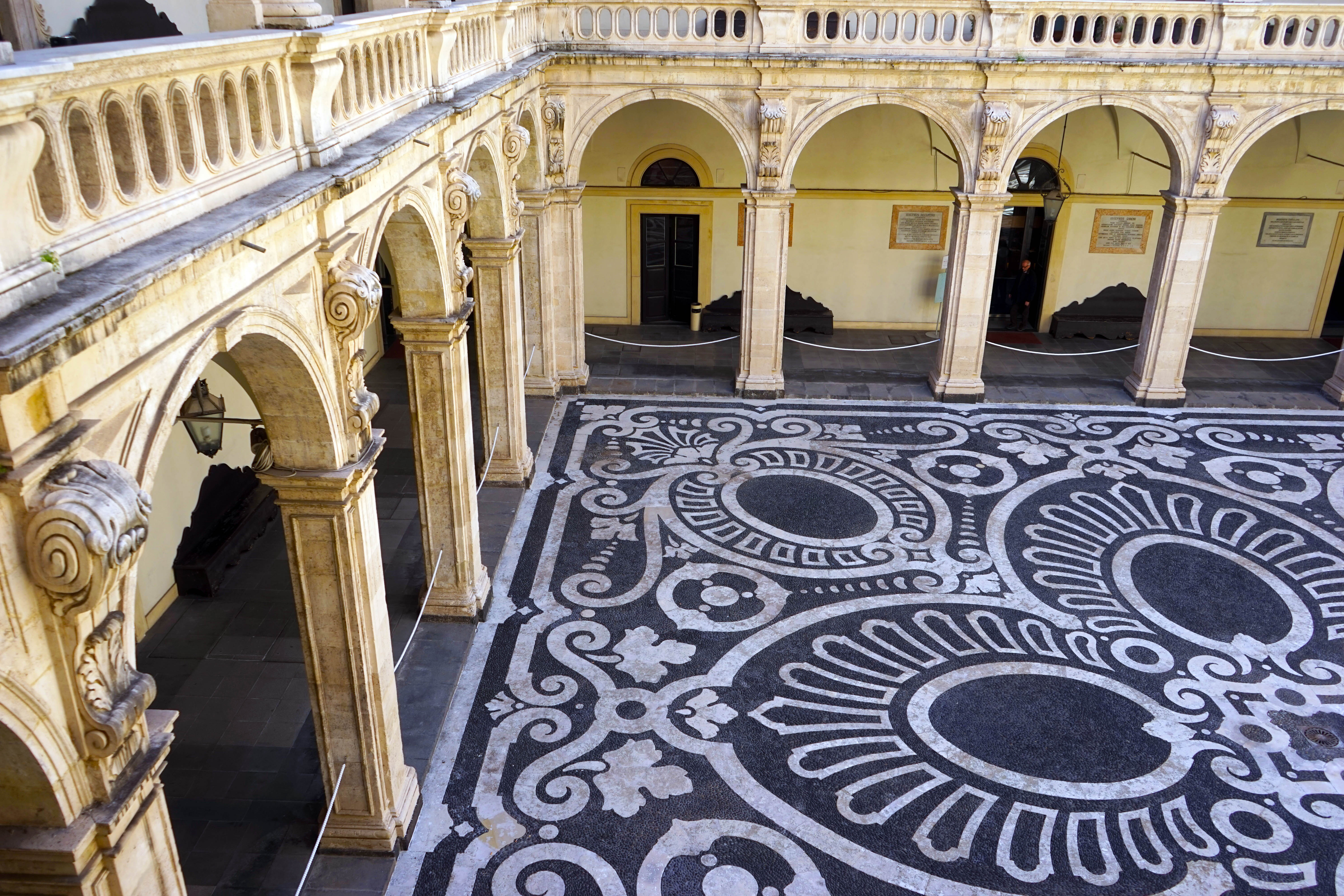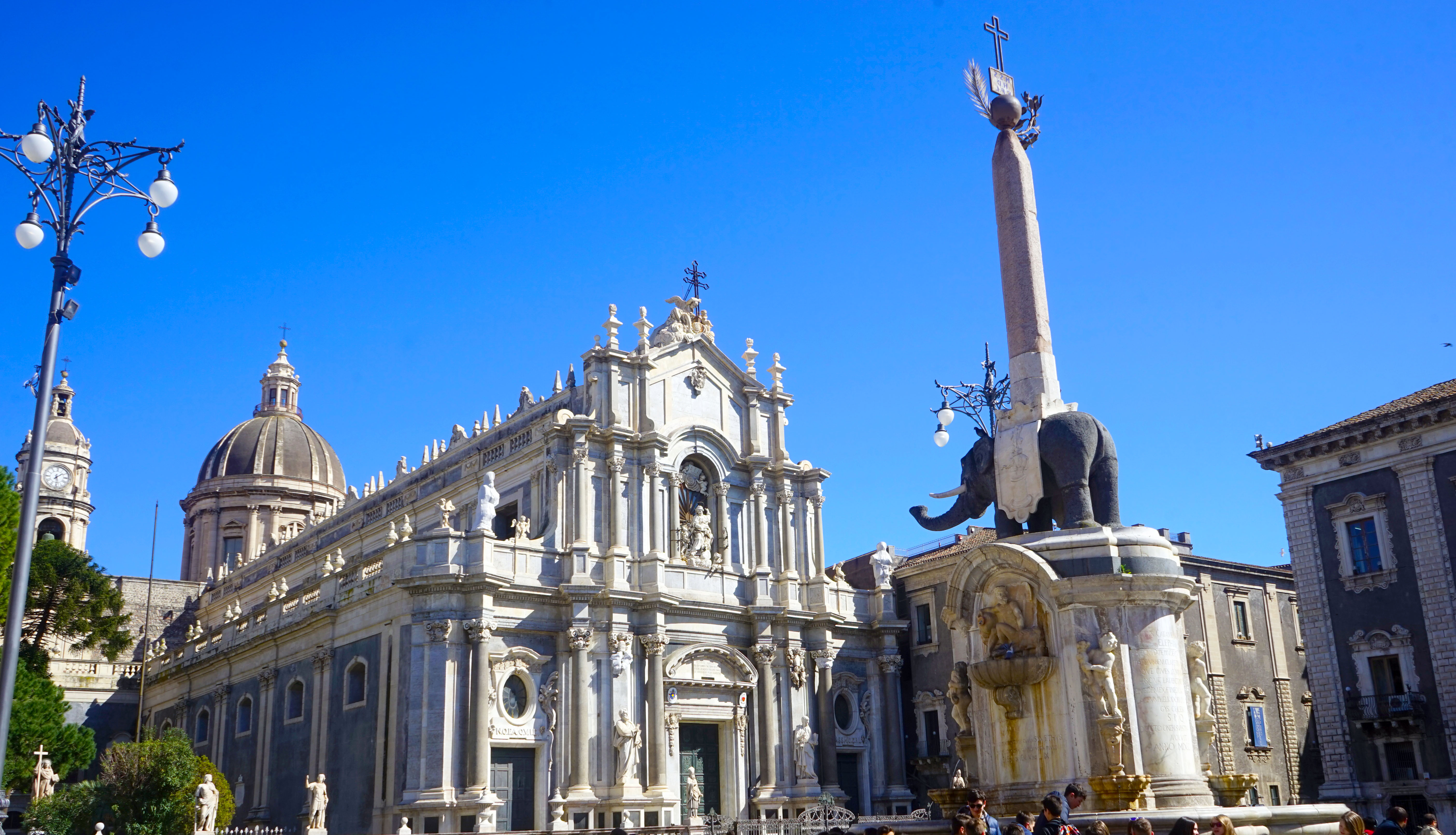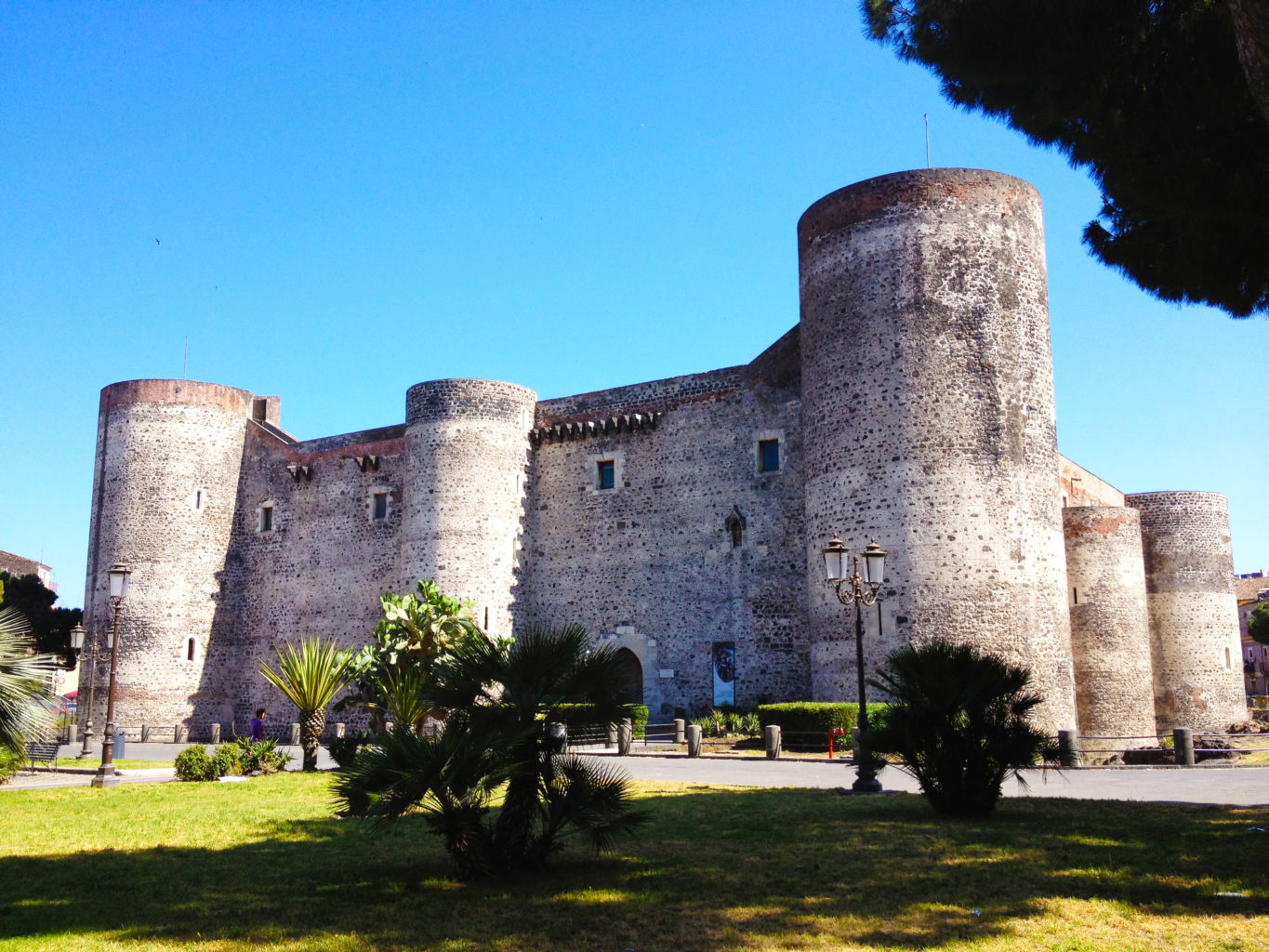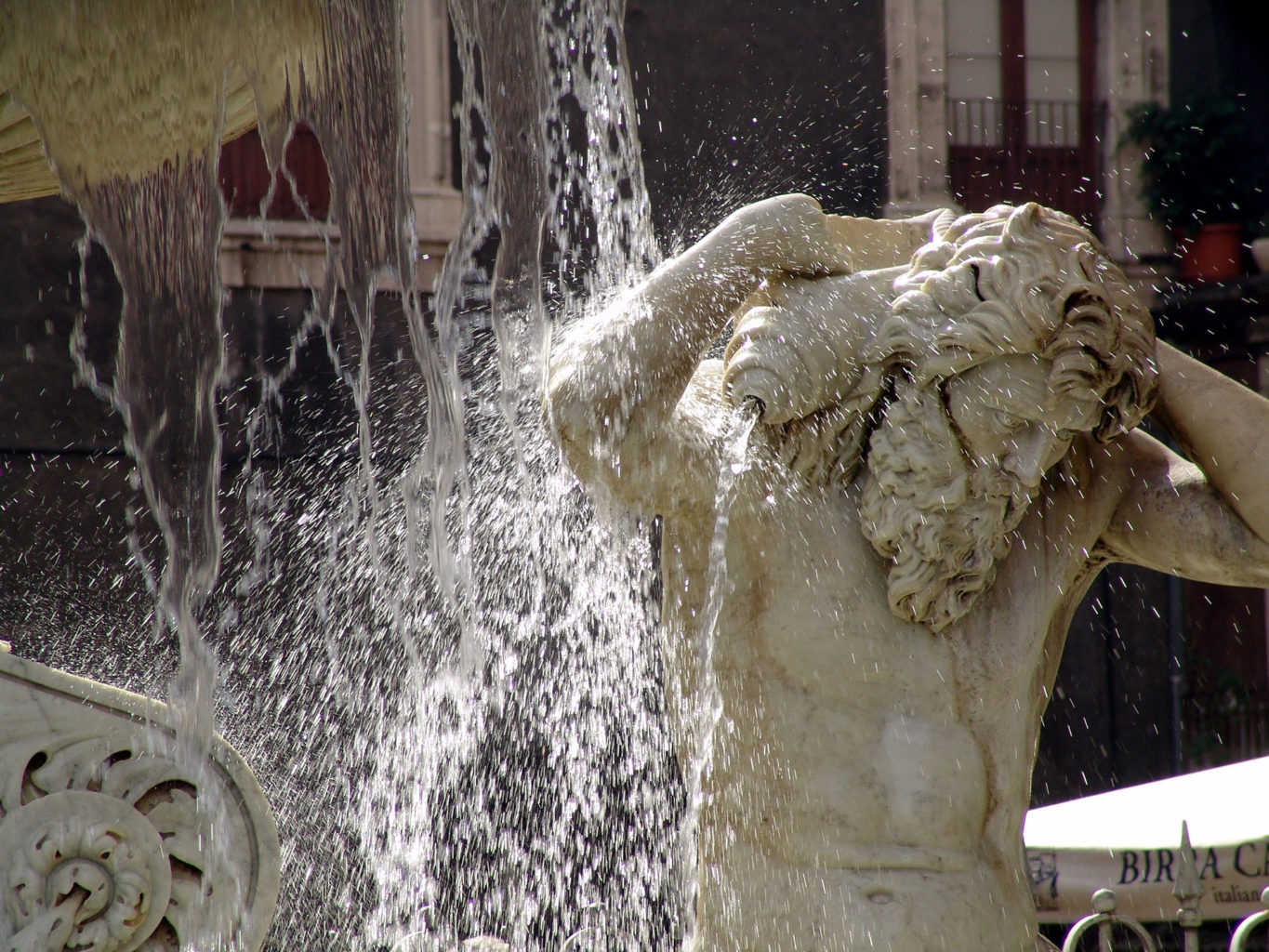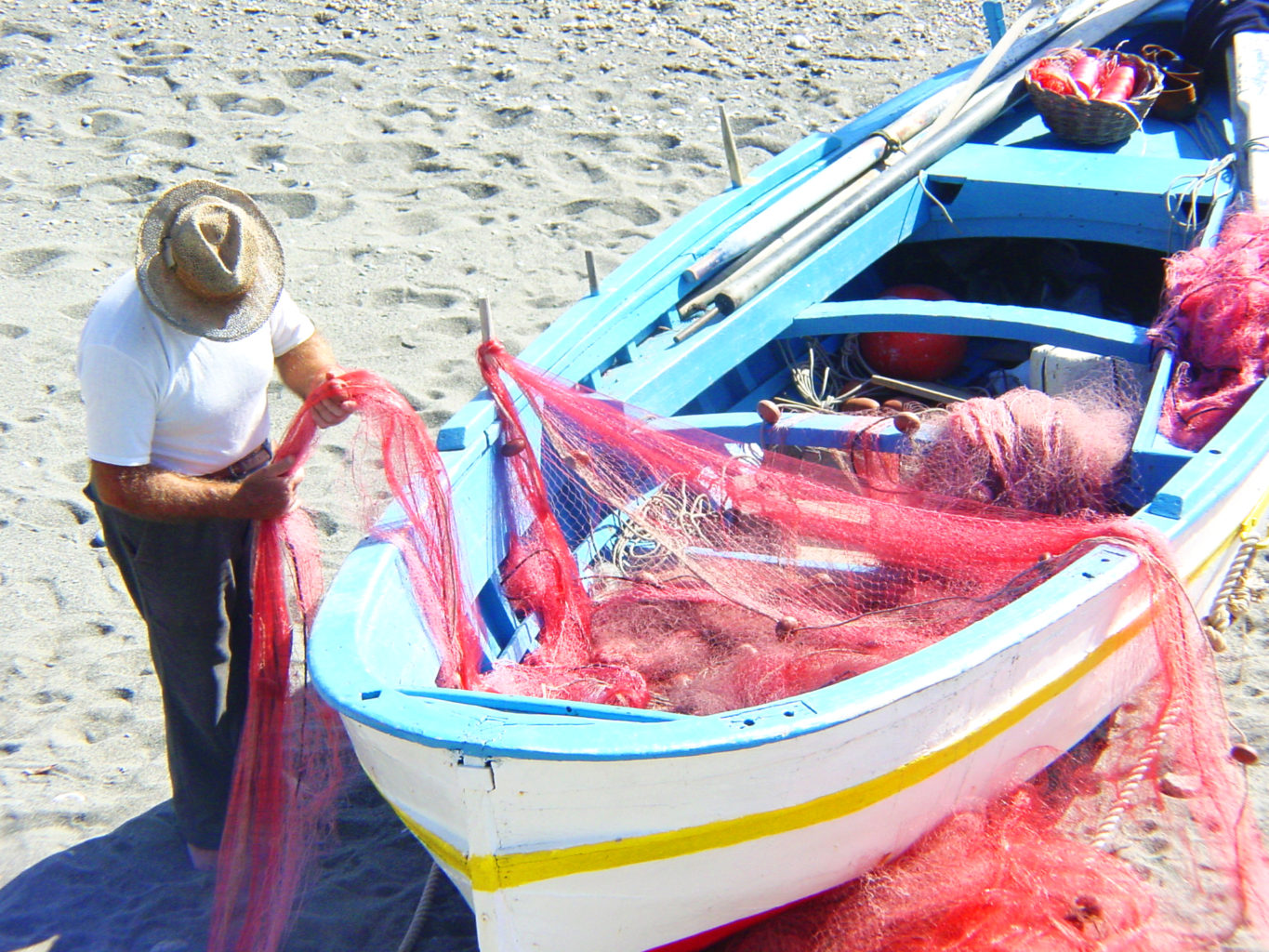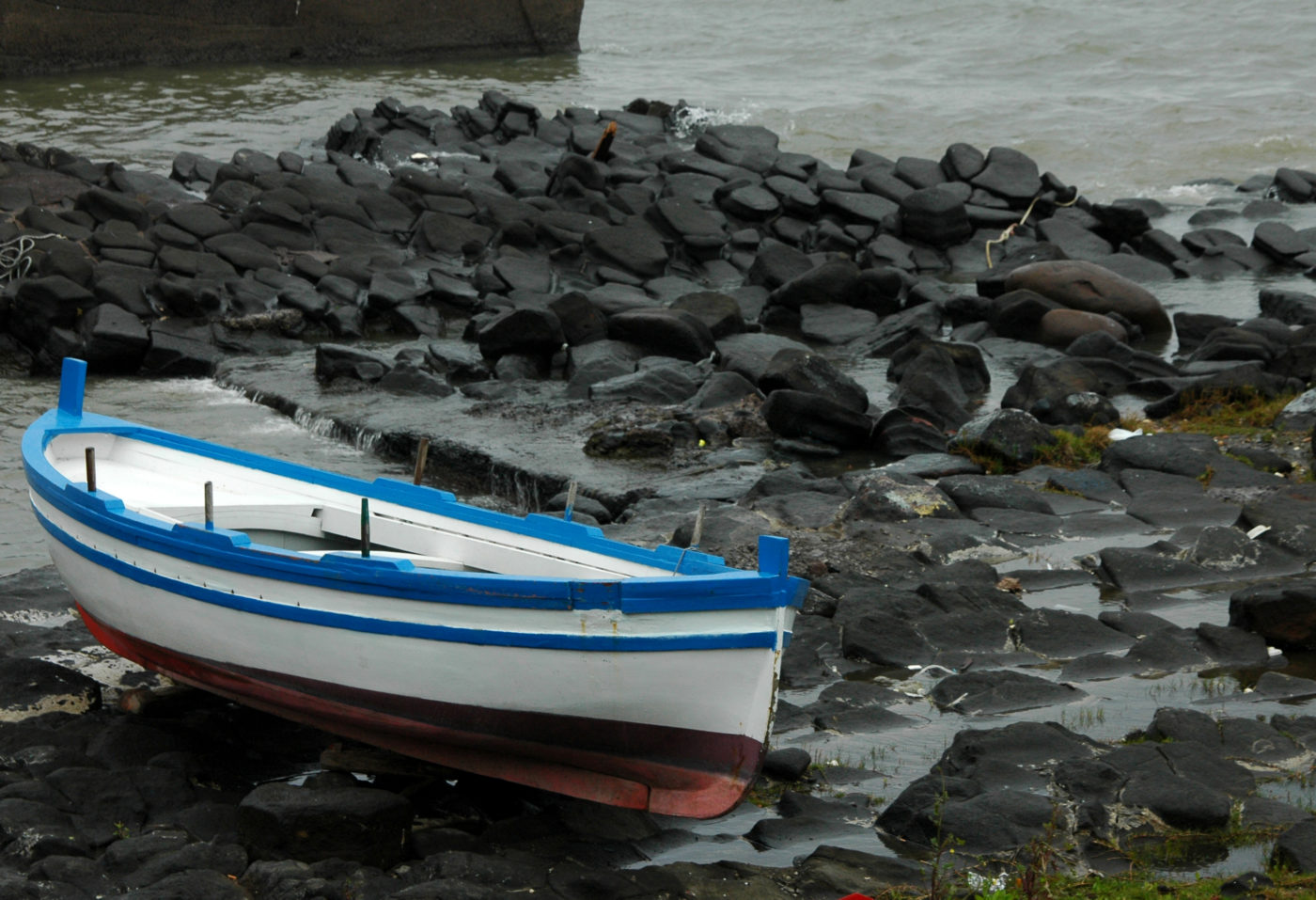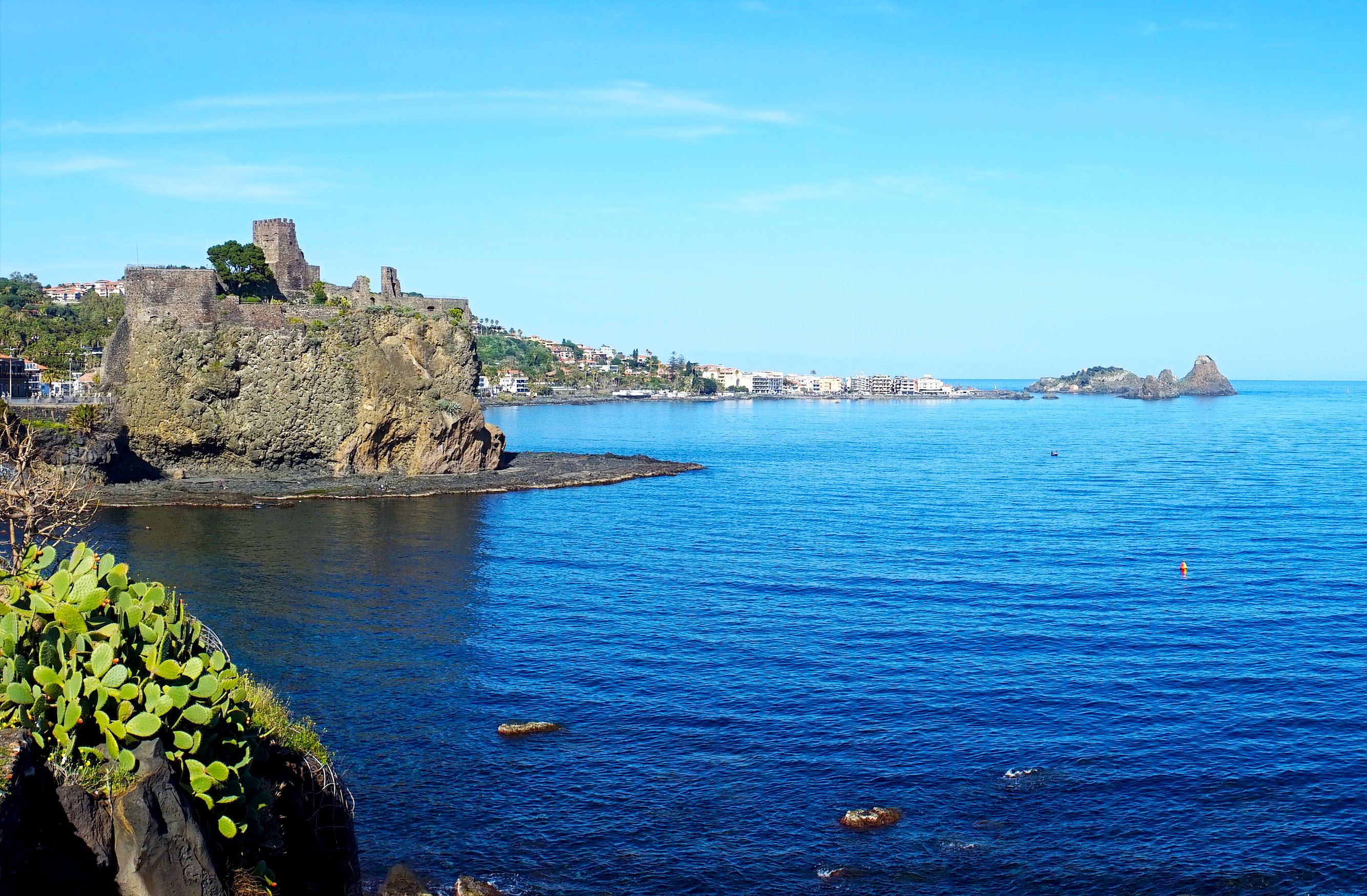Project Description
Catania and Cyclops riviera: myth, flavours and scents
From Ragusa | Full Day
Catania
Catania is the second largest and most populated city in Sicily and a Unesco site. The main square and its baroque palaces and ancient roman vestiges are a unique blend on the island. Inside the main cathedral, the “Duomo”, you can find the grave of the composer Vincenzo Bellini, famous for its opera Norma, that lent its name also to an exquisite dish of pasta with eggplant sauce and salted ricotta cheese. The cathedral is dedicated to Saint Agatha who is the patron saint of the town. She was martyred at the age of 13 in 251 AD. Local people are extremely devoted to her still today and a huge festivity in February attracts hundred thousands of people during the celebrations.
Cyclops coast
After Catania and a visit to its picturesque fish market with its characteristic colours, we drive along the Cyclops coast. According to the Greek mythology, Polyfemus, the giant with one eye on the forehead, threw big blocks of basalt volcanic rock to Ulysses and his fleet while they stopped here on their way home back to Ithaca. The rocks today are a perfect background for your pictures and show the very first geological formation of Mt Etna arising here from the sea. This coastal road offers a beautiful scenery together with two charming fishing villages named Acicastello and Acitrezza.
Here we will enjoy a nice stroll and taste a delicious ice cream before heading back.
Catania
Catania is the second largest and populated city in Sicily after Palermo with about 500,000 inhabitants living in the greater metropolitan area; the area includes part of the villages of the southern slopes of Mount Etna.
The city has always been characterized by a tight connection with Mama Etna or a Muntagna (the mountain) or even Idda (she) to describe the good-natured female character which over the centuries and still today has influenced the history, economy and social moments of the city. Catania is said to be resurrected several times due to catastrophic events such as volcanic eruptions and earthquakes that have from time to time marked death and destruction, but also beautiful rebirth, vitality and initiative that still characterize the lifestyle and somehow the mentality and attitude of its inhabitants.
Such a close vicinity to the volcano has given fertility to the fields due to volcanic ash and minerals, but also abundant stones for the construction of roads, monuments, churches and buildings that are the hallmark of the visit of the city and the surrounding area.
Here the history and arts have shaped the city landscape according to the architectural trends of the historical moment. The Baroque style of the reconstruction after the earthquake of 1693 is the latest and most visible sign today thanks to the original architectural innovations and the distinctive black-and-white colours of the local white limestone and lava anywhere evident on monuments.
Catania today is a city that deserves to be explored on foot around piazza Università, Piazza Duomo and especially along Via Etnea, the main street that cuts through the city from South to North. Behind and at the end the background of Etna, always steaming and looking down at the town with good natured attitude and its round shapes gently sloping down to the Ionian Greek sea.
From here in 729 BC Greek settlers land from faraway territories to found a colony on uneven terrain, hard to coltivate (hence the term Katanè), but which on the other hand ensured a safe harbor, abundance of water and navigable rivers. The first orientation of the Greek city is thus developed from East to West and follows today the second most important street axis of Corso Italia.
This town orientation changes because of the events of the earthquake that destroys and washes away the Roman and medieval city; the new seventeenth century city is now rotated of 90 degrees and runs from south to north. The Corso Italia today shows a few Liberty building, modern, art nouveau buildings and important squares like the Palace of science, but also controversial modern buildings built in the Eighties 1980s which occupy the gaps left for decades by the bombing in World War II.
During the Roman time Catania is a prosperous and wealthy town. Theaters, Thermae, amphitheatres, aqueducts, circus, gymnasium and a forum made Catania one of the most important in the Roman Mediterranean world. Fragments of these glorious vestiges are still visible in the old town, partly covered by the 17th-century city rebuilt on the lava stone of a catastrophic eruption in 1669 that lasted almost two years and entirely covered the Roman and medieval Catania.
The Byzantine and Arabic period did not leave strong heritage as the the Norman period did. The Normans reinforced the Christianity but also provided the town with the construction of important churches, including the Cathedral dedicated to Saint Agatha, patron saint of the city, a young girl who lived and was martyred during the Roman times. Today on the fifth of February they celebrate one of the most remarkable religious and folkloric festivities in the world for the number of people taking part in the celebrations.
Other natural disasters and the arrival of new rulers marked the history of the city. In 1669 a massive volcanic eruption changes the coastline, where castles, walls and fortifications to defend the sea are built by the Swabians, Angevins, Aragonese and Spanish. Charles the fifth fortifies the city with massive walls, often recycling the stones of ancient Roman monuments or incorporating them into the pre existing structures.
The time period that goes from the Normans until Sixteen hundred is marked by political and social conflicts among the new rulers and often among the local noble families; they are in eternal conflict to take over the power which will never turn back benefits on the town development.
Among the prominent personalities, Frederick II leaves the town the Ursino Castle in 1232. Today it is an iconic landamark in town, example of extraordinary military architecture, once located on the shore, today lying in the historic center, surrounded by buildings built on the lava stones of the eruption of 1669.
The earthquake of 1693 produces material devastation and thousands of victims; the day after they are called for the reconstruction the best architects, master artisans, sculptors and stonemasons available in the market to make the city even more beautiful than before. The high life tenor of noble families means consistent economic resources available for the religious corporations well used by the Duke of Camastra in charge of the master plan of the city.
The plan sets up wide streets and squares designed with modern seismic criteria to create gathering places and easy escape routes for the population. The creation of wide streets and squares also has remarkable social aspects; the best buildings, monuments, churches and squares represent the power and authority of the nobles. In those days the economic, social, political and religious power are always closely related.
Vaccarini, Battaglia, Ittar and Palazzotto are the architects in charge of creating the new town which now shines in its splendid Baroque architecture with large concave and convex shapes that blend in the facades of churches, large balconies, sculptural decoration of mythological figures or putti (young innocent children) on the palaces of Via Garibaldi, Corso Vittorio Emanuele and via Etnea.
These streets today are full of life and show the open and often ironic attitude of the people from Catania who love eating out in the many restaurants and like to spend time in the fish market. The market is next to the meat, cheese and fruit market place and it is one of the most authentic places to discover the essence of the city; The curious travelers have an opportunity for a truly unique experience with locals, getting lost among the smells that chase one to each other and blend fast in a very limited space while the voices of those who want to sell and boast its products sound loudly in background, fruit of an old legacy of Catania and Arabic Sicily.
Cyclops coast
The villages of Acicastello and Acitrezza are located on the volcanic coast north of Catania.
The iconic faraglioni rocks (sea tacks) follow stories told by Homer that believe the rocks were thrown against Ulysses when he met the giant Polyfemus during his way home back to Ithaca.
That’s why the area is called also “The Cyclopes coast”. Cycloped were ugly giant that forged the iron on the slopes of mount Etna and they had one eye only on the forehead.
The faraglioni rocks are actually the evidence of the very first formation of Mt Etna arising from the bottom of the sea half a million of years ago.
Today these black rocks and the blue water make the fishing village a perfect spot for moments of relaxation away from the crowd and noise of Catania.
Along the same coast another town called Acicastello closes the volcanic riviera with its imposing castle dating back to the Norman time. It sits on top of a massive piece of lava stone arising from the sea which has very interesting and rare lava pillow formations on the bottom.
The castle is very well kept and – as a rarity – it is even possible to visit inside and enjoy magnificient views of the whole area.
- Private Sedan car or Mercedes Viano up to seven seats
- Private driver speaking your language
- Fuel, motorway toll and parking fee
- Half day service with private driver and car UP TO 4 HOURS
- Full day service with private car and driver UP TO 8 HOURS
- Water bottle onboard
- Visits, stops and panoramic driving tours described on the itinerary
NOT INCLUDED:
- Archeological sites, monuments and churches entrance fees
- Local products and wine tasting or culinary experiences unless included
- Driver and local guides gratuities (we suggest 10% if services meets or exceeds your expectations)
- Local Sicilian regional licensed guide
- Meals, wine tasting or culinary experiences if not already included in the itinerary
- Yachts, helicopter or private plane rental linked to our ground transportation service
–
or send us a message requesting information, our team will respond as soon as possible.

